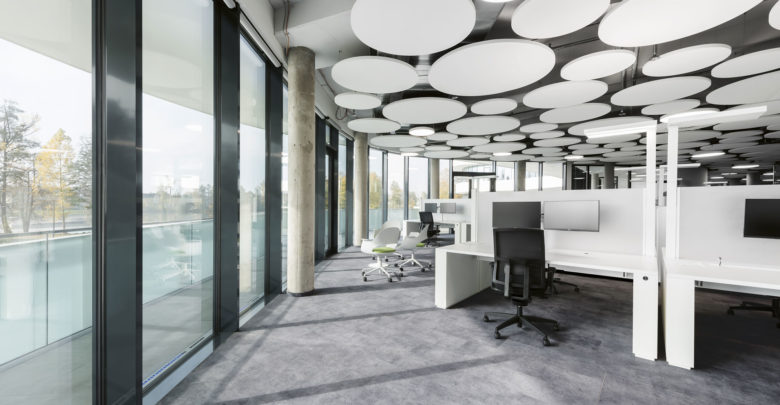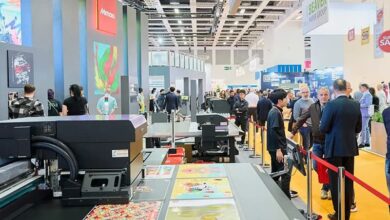Textile Flooring Market Size, Share, Growth, Trends and Forecast, 2028

A recent market intelligence report that is published by Data Insights Partner on the global Textile Floorings Market makes an offering of in-depth analysis of segments and sub-segments in the regional and international Textile Floorings Market. The research also emphasizes on the impact of restraints, drivers, and macro indicators on the regional and global Textile Floorings Market over the short as well as long period of time. A detailed presentation of forecast, trends, and dollar values of global Textile Floorings Market is offered. In accordance with the report, the global Textile Floorings Market is projected to expand by healthy CAGR over the period of forecast.
Market Insight, Drivers, Restraints& Opportunity of the Market:
Flooring systems mainly comprise hard and soft floorings. Materials such as wood laminate, rubber, vinyl and ceramics constitute the former category; while soft flooring consists of textile materials i.e. natural as well as manmade fibres. Flooring systems is one of the key components of interior refurbishment systems used in residential and commercial spaces. It is also finding application in other areas such as outdoor lawns, sports fields and turfs, marine vessels, industrial premises and car interiors. Tufted carpets/rugs can further be classified on the basis of manufacturing type into hand-woven and machine woven.
Soft flooring gets its nomenclature from the nature of material used i.e. textile fibres. It accounts for over 50% of total flooring systems and is conventional medium of flooring. It is manufactured in the form of carpets and rugs, and are defined as broadloom and modular types. Broadloom type is a single rolling sheet type of flooring, while modular type is a tiled type of flooring. The constituent material mainly consists of two types namely natural fibres and manmade/synthetic fibres. Nylon6, Nylon66, Polyethylene Terephthalate (Polyester) and Acrylic belong to the manmade/synthetic fibres, while natural fibres contain animal-based fibres, i.e. wool, fur and plant-based fibres i.e. Sisal and Seagrass.
Textile floorings are used for aesthetic purposes and also for noise- and echo-proofing in residential and commercial spaces such as residences, office buildings, hotels and restaurants, theatres and auditoriums, public places such as railway stations and airports .
Locations such as hospitals and health centres use hypo allergenic carpet floorings. On the other hand, cars, marine vessels and industrial premises employ flooring types that have a high degree of durability, e.g. waterproof and dustproof. Plant-based fibre flooring is used in sports fields and as turf.
q The global floor covering market is expected to benefit from a large population of consumers seeking high-quality products. In addition, rising consumer confidence, increasing disposable income, growing demand for luxury flooring options due to the booming residential and commercial sector are major factors contributing to growth of the market.
q Over the past five years, consumption of textile and furnishings for homes has witnessed consistent growth, driven by factors such as rising consumer spending on home renovation, accelerating investments on infrastructure, rising demand from Asian countries such as India, China, South Korea and Indonesia.
q Growth in North American markets , particularly in U.S., where the residential sector is currently in recovery mode, thereby, generating demand for textile floorings, which is expected to result in substantial increase in production rates of floorings in the near future
Product supply and its usage is affected due to waste generation and low conversion rate into recycled carpets posing challenges for companies in terms of waste disposal, logistics and recycling costs as per the mandatory Waste and Resources Action Programme (WRAP) between governments and manufacturing companies in certain countries, particularly the U.S., APAC and Europe.
Segment Covered:
This market intelligence report on the global Textile Floorings Market encompasses market segments based on application, material, product, technology and country.
By Application the global Textile Floorings Market has been divided into:
· Residential
· Commercial
· Others
By Product the global Textile Floorings Market has been divided into:
· Rugs
· Carpets
By Technology the global Textile Floorings Market has been divided into:
· Tufting
· Woven
· Needlefelt
By Material the global Textile Floorings Market has been divided into:
· Synthetic Textiles
· Animal Textiles
· Plant Textiles
By country/region, the global Textile Floorings Market has been divided into:
· North America (the U.S., Canada),
· Latin America (Brazil, Mexico, Argentina and other countries),
· Europe (Germany, France, the U.K., Spain, Italy, Russia, and other countries),
· Asia Pacific (India, Japan, China, Australia and New Zealand and other countries),
· Middle East and Africa (GCC, South Africa, Israel and Other countries).
Profiling of Market Players:
This business intelligence report offers profiling of reputed companies that are operating in the market. Companies such as:
· Mohawk Industries, Inc.
· Interface, Inc.
· Beaulieu International Group N.V
· Tarkett SA
· Balta Group
· Shaw Industries Group Inc.
· Forbo Holding AG
· Mannington Mills, Inc.
· J+J Flooring Group
· Vorwerk and Co. KG
others have been profiled into detail so as to offer a glimpse of the market leaders. Moreover, parameters such as Textile Floorings Market related investment & spending and developments by major players of the market are tracked in this global report.
Report Highlights:
In-depth analysis of the micro and macro indicators, market trends, and forecasts of demand is offered by this business intelligence report. Furthermore, the report offers a vivid picture of the factors that are steering and restraining the growth of this market across all geographical segments. In addition to that, IGR-Growth Matrix analysis is also provided in the report so as to share insight of the investment areas that new or existing market players can take into consideration. Various analytical tools such as DRO analysis, Porter’s five forces analysis has been used in this report to present a clear picture of the market. The study focuses on the present market trends and provides market forecast from the year 2020-2028. Emerging trends that would shape the market demand in the years to come have been highlighted in this report. A competitive analysis in each of the geographical segments gives an insight into market share of the global players.
Salient Features:
Ø This study offers comprehensive yet detailed analysis of the Textile Floorings Market, size of the market (US$ Mn ), and Compound Annual Growth Rate (CAGR (%)) for the period of forecast: 2020-2028, taking into account 2019 as the base year
Ø It explains upcoming revenue opportunities across various market segments and attractive matrix of investment proposition for the said market
Ø This market intelligence report also offers pivotal insights about various market opportunities, restraints, drivers, competitive market strategies of leading market players, emerging market trends, and regional outlook
Ø Profiling of key market players in the world Textile Floorings Market is done by taking into account various parameters such as company strategies, distribution strategies, product portfolio, financial performance, key developments, geographical presence, and company overview
Ø The data of this report would allow management authorities and marketers of companies alike to take informed decision when it comes to launch of Type of models, government initiatives, marketing tactics and expansion, and technical up gradation
Ø The world market for Textile Floorings caters to the needs of various stakeholders pertaining to this industry, namely suppliers, manufacturers, investors, and distributors for Textile Floorings Market. The research also caters to the rising needs of consulting and research firms, financial analysts, and new market entrants
Ø Research methodologies that have been adopted for the purpose of this study have been clearly elaborated so as to facilitate better understanding of the reports
Ø Reports have been made based on the guidelines as mandated by General Data Protection Regulation
Ø Ample number of examples and case studies have been taken into consideration before coming to a conclusion

.gif)



